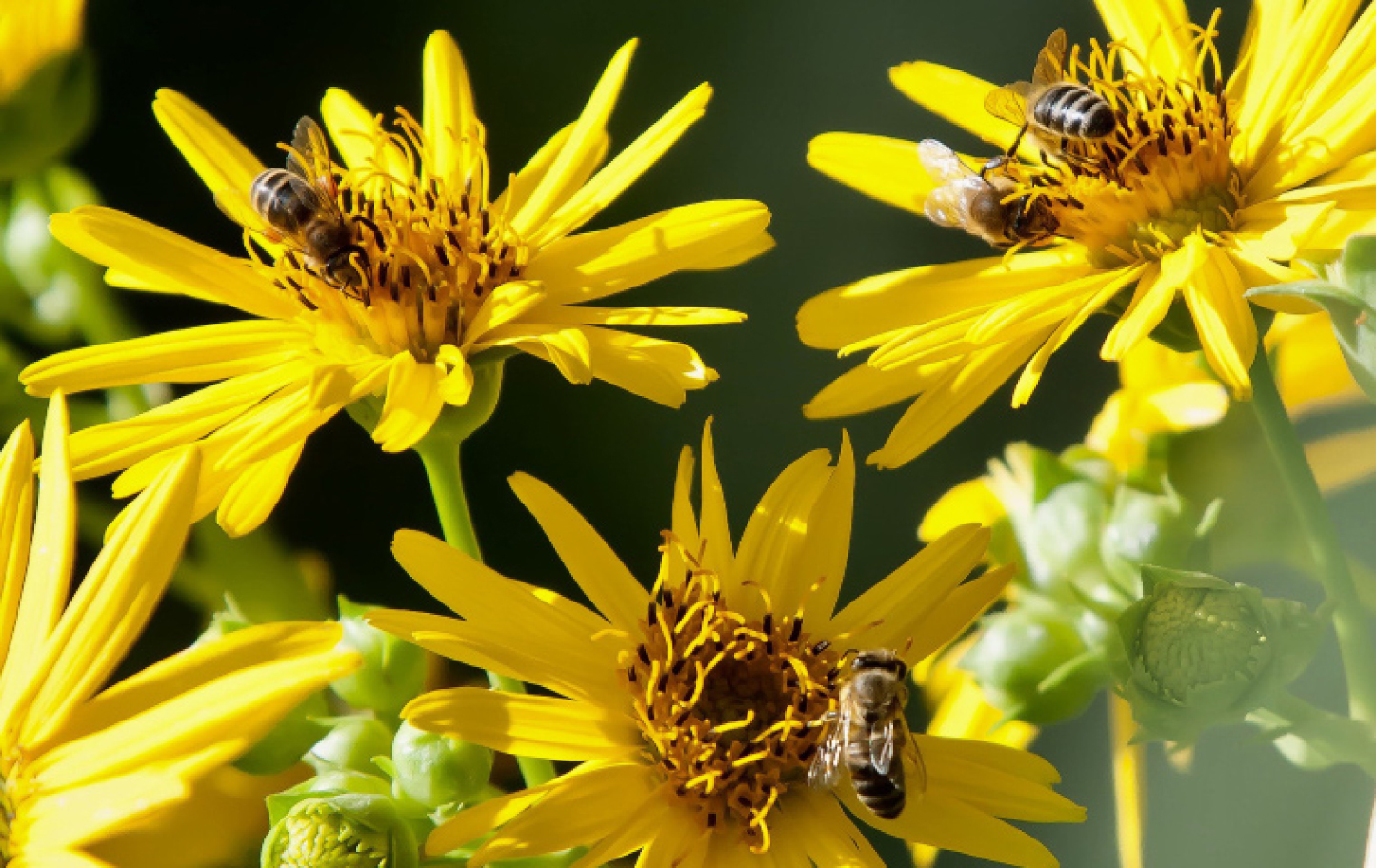Farm & Ranch
The Garden Guy – Cup Plant

Cup Plant – One Stop Cafe for Birds and Pollinators
By Norman Winter
When it comes to the backyard wildlife habit, the cup plant does it all. To me, it is like the flag bearer perennial for bees, butterflies and birds. It is a stalwart native in 34 states including those that border states around Texas, minus New Mexico and could be just the plant needed for North Texas farm and ranch landscapes.
However, its size makes you feel like it is the composite, or aster if you will, that ate New York. It is big, bold and wonderful and this is the time of the year it shines the most. If you are getting interested but are unfamiliar with the cup plant, it is known botanically as Silphium perfoliatum, and, as I alluded above, cold hardy from zones three to nine. It can grow tall, four to 10 feet and colonizes, so it is a plant for the back of the border.
Though it may be hard to imagine, they can dwarf a brown-eyed Susan, Rudbeckia triloba, or a Brazilian sage, Salvia guaranitica, both also considered large plants and terrific partners for the cup plant.
You may be asking, why is it called a cup plant? This is one of the magical attributes of the plant. As the plant grows, it develops large square stems that give the impression of piercing the center of the large leaves. It’s actually two leaves without petioles that are attached to the stem, forming a perfect cup to collect rainwater. Small birds like finches take advantage of this natural reservoir of water. These same birds also feed on the seeds as they mature and get ready to disperse.
You will find the blooms to be covered in what may best be described as a pollinating frenzy. Every kind of bee, including honeybees by the hundreds, bumble bees, and plenty of those you don’t know, including wasps, are there doing their thing.
You will also notice eastern tiger swallowtails, long-tailed skippers, fiery skippers and yellow sulphur butterflies. It is like a Serengeti for pollinators. You are also likely to find hummingbirds on the plants as well.
To read more pick up a copy of the August 2018 NTFR issue. To subscribe call 940-872-5922.
Farm & Ranch
Hazards of Backyard Poultry

By Barry Whitworth, DVM
Having backyard poultry is a popular agriculture enterprise. According to the United States Department of Agriculture, 0.8 percent of all households in the United States have chickens. People keep chickens for a variety of reasons with table eggs being one of the more common reasons.
Unfortunately, some of these poultry producers are not aware of the hazards that come with keeping poultry because many times they carry pathogens but appear healthy.
Chickens are carriers of several zoonotic diseases. These are diseases that can be passed from animals to humans. According to a recent survey in Pennsylvania, a majority of backyard poultry producers were aware of the dangers of avian influenza. However, this study also revealed that far fewer producers were aware of the risk of possible exposure to Salmonella and Campylobacter.
The lack of knowledge about the hazards of raising poultry likely contributes to the continued issues of Salmonella outbreaks associated with backyard poultry. In 2023, the Centers for Disease Control and Prevention reported 1,072 illnesses of Salmonella linked to backyard poultry, and 272 of those patients required hospitalization. Oklahoma reported 43 individuals with the disease.
To read more, pick up a copy of the April issue of NTFR magazine. To subscribe by mail, call 940-872-5922.
Farm & Ranch
Ag Elsewhere: Wyoming

By Tressa Lawrence
Babies are tucked away in every nook and cranny. Many ranchers across Wyoming have baby animals popping up all over this time of year.
Farm & Ranch
Ag Elsewhere: Montana

By Lindsey Monk
Another load of grain in to keep feeding the calves until the green grass can really start popping.
-

 Country Lifestyles1 year ago
Country Lifestyles1 year agoScott & Stacey Schumacher: A Growth Mindset
-

 Equine7 months ago
Equine7 months agoThe Will to Win
-

 Country Lifestyles7 years ago
Country Lifestyles7 years agoStyle Your Profile – What your style cowboy hat says about you and new trends in 2017
-

 Country Lifestyles4 years ago
Country Lifestyles4 years agoAmber Crawford, Breakaway Roper
-

 HOME7 years ago
HOME7 years agoGrazing North Texas – Wilman Lovegrass
-

 Country Lifestyles7 years ago
Country Lifestyles7 years agoDecember 2016 Profile, Rusty Riddle – The Riddle Way
-

 Country Lifestyles8 years ago
Country Lifestyles8 years agoJune 2016 Profile – The man behind the mic: Bob Tallman
-

 Outdoor9 years ago
Outdoor9 years agoButtercup or Primrose?






